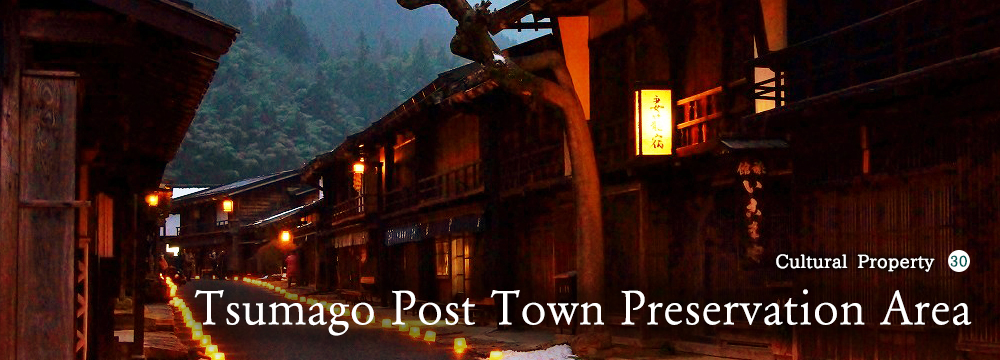
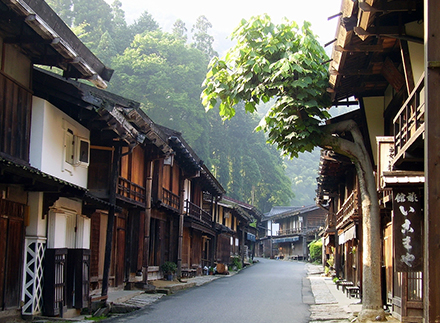
Story
Established as the 42th post town from Edo (Tokyo) in 1601, Tsumago functioned as a post town during the Edo period.
The post townscape area still has an air of the Edo period.
Overview
Tsumago post town is a major tourist spot of Kisoji, as well as neighboring Magome-juku (Nakatsugawa City, Gifu Prefecture) and the old Nakasendo Road passing over Magometouge Pass.
While traditional townscapes were missing all over the country due to the rapid economic growth, Tsumago was the first to make a town’s overall effort to preserve the old townscape. Due to the effort, Tsumago was selected as the first candidate town for an Important Preservation District for Groups of Traditional Buildings in 1976.
Points of Interest
Nakasendo Road, which connects Edo (Tokyo) and Kyoto, was also called Kisoji (Kiso Road) as it passes through the mountainous Kiso. Tsumago is the 42nd from Edo out of 69 post towns on Nakasendo. The town flourished as a key traffic hub for the Nakasendo and Inado Roads.
In the course of the Meiji period (1868 - 1912), railways and new roads were constructed. Tsumago lost its role as a post town and went down into a decline. During the rapid economic growth in the Showa period (1926 - 1989), the post townscape of Tsumago was re-evaluated as having an air of the Edo period. Tsumago became a birthplace of townscape preservation movements in Japan.
The residents in Tsumago established three main principles for their land: Don't Sell, Don't Lend, and Don't Destroy. They continue to live here while preserving the valuable historical assets of the townscape of the Edo period.
Interview
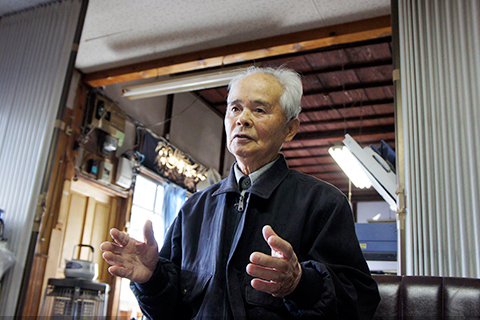
Mr. Kobayashi, director of Tsumago Post Town Appreciation Society
We interviewed Mr. Kobayashi. He is the director of Tsumago Post Town Appreciation Society.
What impressed us at first was the fact that the society has a history of 55 years. The reason why the words of Mr .Kobayashi carry a lot of weight is his long carrier since the launch. We felt that way and heard him speak.
They raised their voices to preserve the Middle Age Tsumago in the spring of 1964. However, at the time of the rapid economic growth, opposing opinions stood out as widening of roads, installation of power poles, and construction of large hotels were considered to be more important for tourism.
It was surprising that they preserved the townscape only by appealing that the town’s natural environment, such as the sound of water dropping from moss, will surely become popular among women.
Mr. Kobayashi told us that he was glad to have come so far, as something good about Tsumago has remained. We felt that his words expressed everything and carried that weight.
“We have many things to be proud of, such as Nezamenotoko, Kiso-hinoki cypress, Kiso lacquerware, soba. Most of all, I love the moment in the post town when the lights are turned on in the evening,” he said. We asked him to guide us to his favorite place and walked together.
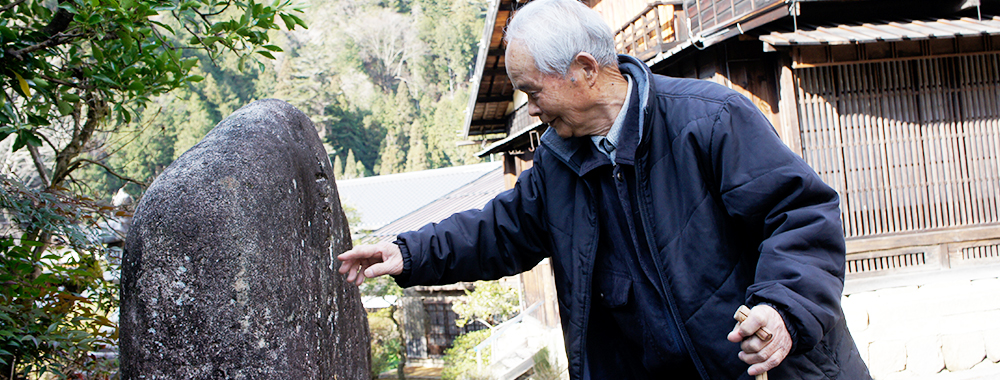
“Look at this.”
There is a chipped portion on the stone monument to Tsumago-juku. While the craftsman was inscribing the characters, a beautiful woman passed behind him and caught his eye, and he got clumsy.
He told us an interesting secret of Tsumago.
“Come and have a tea!”
The landlady of Sawadaya talked to us. The store sells tasty kuri-kinton (sweet chestnut paste) in Tsumago.
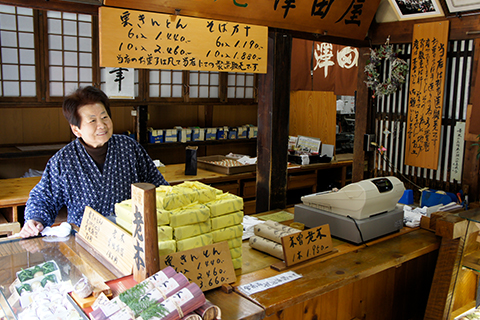
Landlady of Sawadaya
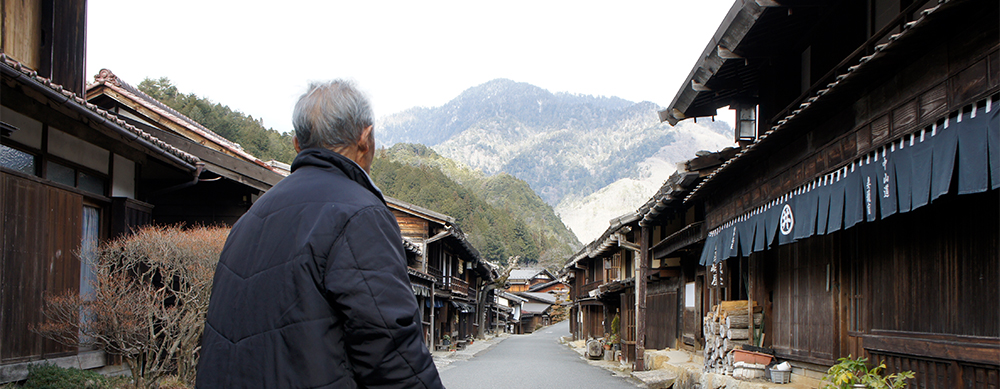
There we arrived.
Mr. Kobayashi’s favorite is the evening scene of the post town seen from the point. He has been engaged in Tsumago for over 50 years and knows every corner of the town.
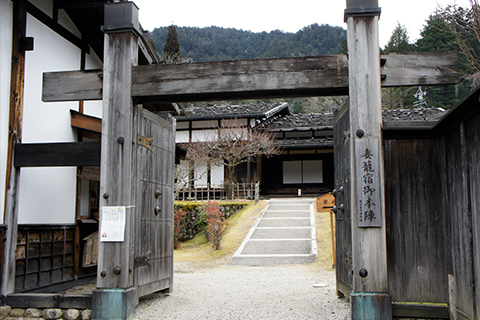
Tsumago Post Town Honjin

Mochi (rice cake) being baked in the sunken hearth
On the way back, we found Tsumago Post Town Honjin. Something smelled good from inside and we entered.
What a treat!
Mochi (rice cake) was being baked in the sunken hearth, and oshiruko (azuki-bean soup with rice cake) was served. We were treated to oshiruko.
An event is held at Tsumago Post Town Honjin on January 11 every year. Don’t miss it!
Attractions
Soba and gohei-mochi (skewered rice cakes) are Tsumago’s specialties.
Access
From the closest station & interchange
From Nagiso Station on the JR Chuo Line
10 minutes by car, taxi, bus
40 minutes’ walk
From the Ina Interchange or the Nakatsugawa Interchange on Chuo Expressway
National road 19 and 256, 30 minutes by car
Cross the Nagiso-ohashi Bridge, and turn to the right at the first signal. Go straight 500 m, and you will arrive at the entrance to Tsumago.
Address
Tsumago Post Town Tourist Information Office
2159-2 Azuma, Nagiso Town, Kiso-gun, Nagano Prefecture
Phone:0264-57-3123 FAX:0264-57-4036
Website:http://www.tumago.jp/